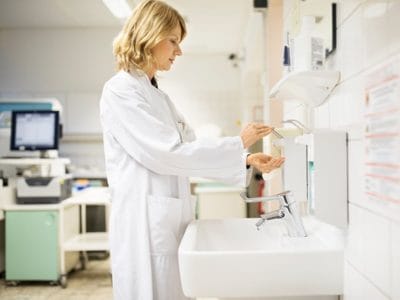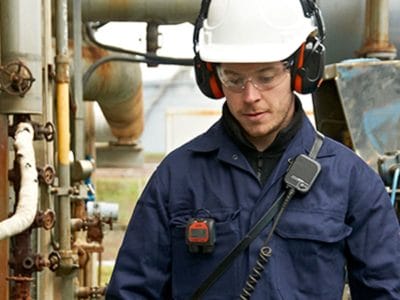
Dangerous Gases Within our Healthcare Facilities
At this time in crisis, we need to be protecting those keeping us safe
Doctors, nurses as well as all the other healthcare workers and patients may be exposed to a wide range of chemicals emitted from various sources such as disinfectants and sterilitants (ethylene oxide, glutaraldehyde, formaldehyde, alcohols), anesthetic gases, (isoflurane and sevoflurane) laboratory or pharmaceutical products, some of which have been shown to cause allergic reactions such as conjunctivitis, rhinitis or contact dermatitis and even occupational asthma.
Hazardous VOC Gases Found Within Hospitals
At this time of crisis, we need to be protecting those keeping us safe. Hospitals are clean sterile environments, but very little is known about the chemical condition of indoor air in hospitals.
A buildup of harmful VOCs inside can result in what is called Building Related Illness or Sick Building Syndrome. Sick Building Syndrome can cause symptoms that include headaches, difficulty concentrating, irritability, brain fog, depression, dizziness, nausea, allergies, asthma, irritated skin, eyes, nose, and throat. Removal of these harmful VOCs often results in rapid relief in symptoms.
”For all compounds, concentrations measured were lower than concentrations known to be harmful in humans. However, results showed that indoor air of sampling locations contains a complex mixture of VOCs. Further multicenter studies are required to compare these results. A full understanding of the exposure of healthcare workers and patients to complex mixtures of chemical compounds can then be related to potential health outcomes.
National Library of Medicine National Institutes of Health
Exposure To VOCs In Healthcare Settings
The use of alcohol-based hand rubs are highly recommended for hand hygiene to reduce hospital-acquired infections. Most commercially available contain 70% by weight of ethanol and isopropanol during hygienic hand disinfection, users would be exposed, for short periods, to a sudden change in ethanol concentrations from 0 to 14.3 mg/L.
Even though many airborne contaminants within a clinical setting can be removed using high-efficiency particulate air (HEPA) filtration. This method alone will not remove VOCs.
Ultimately limitation and control of VOC build-up in a hospital is the most effective way of ensuring that our dedicated healthcare works are patients have limited exposure to these compounds.
This can be done in a number of ways:
- Room separation
Restricting the passage of air between clinical procedures room by double-door gasketed windows which prevents the passage of VOCs from one room to another. - Furniture
Avoiding wood or polished or painted furniture which can give off formaldehyde and other VOCs. Alternatively using steel furniture which can be washed beforehand and then outgassed is preferable as the VOC concentration released is much lower. - Out-gassing plastic
Ensuring plastic equipment such as petri-dishes and pipettes are opened in plenty of time and in a separate room to allow it to vent and out-gas. - VOC-free paints and cleaning products
Using paints that are guaranteed to be VOC free and alternative cleaning products that are free from ethanol helps to limit additional VOC exposure. - Laboratory workers
Limiting the use of cosmetics, perfumes and smoking of all staff working in the lab.
Download our FREE Guide
“Hazardous VOC Gases Found Within Hospitals”
The hazardous VOC gases found within hospitals guide provides the reader with an in-depth balance of knowledge outlining the danger in which can circulate around the air in our healthcare facilities. VOCs build-up from many of product that are used which means loads of healthcare workers are exposed every day without even knowing. In general terms, the two most widely used technologies to measure total VOCs are Flame Ionisation Detection (FID) and Photoionisation Detection (PID). Both technologies rely on the principle that when most organic vapours burn they produce positively charged carbon ions as an intermediate product of combustion.



















